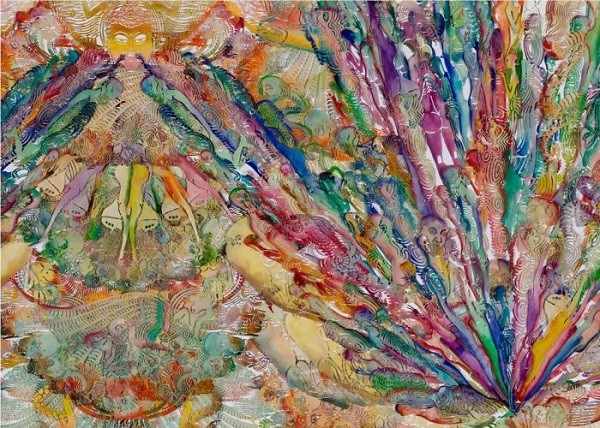"The obligation of Chinese artists is to propagate Chinese culture in an artistic form."
Thus said Wu Jian'an to China Daily, as the Beijing-born artist, who employs paper-cutting in his works, interprets the immortal “Legend of the White Snake” through his own version of contemporary art.
As Wu’s artworks hang at the Prince Kung's Palace Museum in Beijing’s Xicheng District, a group from Shaanxi Province also performs a shadow play of the folklore in the same venue.
Also referred to as “Legend of Lady White Snake,” the classic tale is basically about a married couple who fought for their love against all odds: a young man named Xu Xian and an unnamed white snake only referred to as Madame White Snake, Lady White, White Lady or White Maiden. In later versions of the story, when the snake transformed itself to that of a young maiden, the name Bai Suzhen was used.
The two main characters dealt with acceptance, fidelity, supernatural battles, imprisonment and death. True love won in the end.
Xu Xian first met the magical snake--in the form of a female human--in a bridge near Hangzhou’s West Lake. This freshwater lake in the capital of Zhejiang Province was inscribed by UNESCO in 2011 as a World Heritage Site.
The bridge, now a popular tourist attraction, is the present Duan Jia Qiao or Duan Qiao Bridge, aka the Broken Bridge, in Dandong in Liaoning Province. It was called Bao You Qiao (“Bridge of Treasure Blessing”) during the Song Dynasty (960-1279).
Wilt L. Idema, a professor at Harvard University’s Department of East Asian Languages, wrote an article entitled, “Old Tales for New Times: Some Comments on the Cultural Translation of China's Four Great Folktales in the Twentieth Century,” published in Taiwan Journal of East Asian Studies in June 2012.
Professor Idema named the following as four of the greatest folktales in the country (in alphabetical order): “Buffalo Boy and Weaving Maiden” (or “The Weaver Girl and the Cowherd”), “Liang Shanbo and Zhu Yingtai” (or “The Butterfly Lovers”), “Meng Jiangnu” (or “Lady Meng Jiang”) and “The White Snake.”
It is believed that the “Legend” first surfaced during the Tang Dynasty (618-907) and was passed on from one period to another.
Multiple stage, TV and film adaptations have been made ever since. It was also the inspiration behind some comic strips, forms of writing, and “tanci,” a form of narrative song.
Wu, also an associate professor at the Central Academy of Fine Arts in Beijing where he also earned his master’s degree, staged his first solo exhibit in 2005 entitled “Search for Piyingxi” at the academy’s Oil Painting Department Gallery.
His last solo exhibit was “Transformation” in 2014 held in Chambers Fine Art in Beijing (March 29-May 18) and in New York (Nov. 6-Dec. 20).
Interested to know how Wu’s art of paper-cutting breathes life into the “Legend of Lady White Snake?”
Curious how shadow puppetry weaves the tale of Xu Xian and Madame White Snake?
The exhibit and storytelling run until Sept. 9. Admission is free.



























